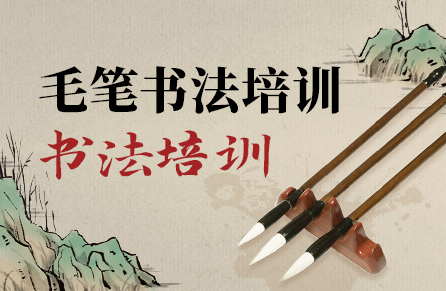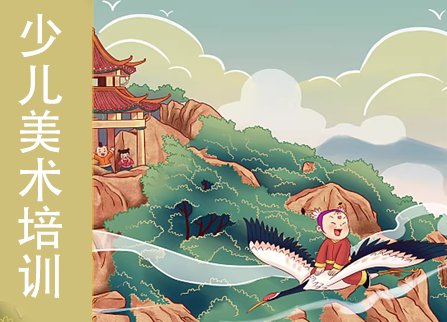民族舞蹈插秧舞
導讀:民族舞蹈是中國豐富多樣的文化遺產之一,插秧舞作為民族舞蹈的一種,具有獨特的藝術魅力和深厚的文化內涵。本文將從定義、分類、舉例和比較四個方面系統闡述民族舞蹈插秧舞的相關知識
民族舞蹈是中國豐富多樣的文化遺產之一,插秧舞作為民族舞蹈的一種,具有獨特的藝術魅力和深厚的文化內涵。本文將從定義、分類、舉例和比較四個方面系統闡述民族舞蹈插秧舞的相關知識。
【引言】
民族舞蹈插秧舞是中國民族舞蹈中的一種,通過模擬農耕活動中的插秧過程,以舞蹈的形式表現出農民勞動的歡樂和祈求豐收的愿望。下面將從定義、分類、舉例和比較四個方面來深入探討民族舞蹈插秧舞的內涵與特點。
【定義】
民族舞蹈插秧舞是一種以插秧為主題的舞蹈表演形式。它以插秧的動作為主線,通過舞蹈編排、音樂節奏和舞者的動作表現,展現了插秧這一農業生產中的重要環節。它不僅具有農耕文化的特點,也融入了舞蹈藝術的審美要求。
【分類】
民族舞蹈插秧舞可以按地域或民族特色進行分類。根據地域劃分,插秧舞在中國各地具有不同的風格和表現形式,如南方的插秧舞更加柔和細膩,而北方的插秧舞則更加豪放激昂。根據民族特色劃分,不同民族插秧舞的舞蹈動作、服飾和音樂等都存在差異,如彝族的插秧舞中加入了獨特的踩踏舞蹈元素,藏族的插秧舞則更加注重身體的舞蹈表現。
【舉例】
民族舞蹈插秧舞在中國各地有著廣泛的傳承和演出。廣西壯族自治區的插秧舞《歡樂插秧曲》,以其歡快的旋律和靈動的舞姿,展現了壯族人民的農耕生活和對美好未來的向往。云南省的傣族插秧舞《云水插秧歌》,以其獨特的舞蹈形式和嫻熟的插秧動作,如潑水、撒谷、跳躍等,展示了傣族人民對生活和大自然的熱愛。
【比較】
民族舞蹈插秧舞與其他舞蹈形式相比,具有獨特的特點和魅力。與芭蕾舞相比,插秧舞注重舞者的身體協調和動作的流暢性,更加注重展現生活中的真實場景和情感;與古典舞相比,插秧舞更加貼近現實生活,以農村勞動為題材,展現了農民的辛勤勞動和對美好生活的期待。
【結尾】
民族舞蹈插秧舞以其獨特的藝術形式和深厚的文化內涵,在中國的舞蹈藝術領域中占據著重要地位。通過插秧舞這一主題,舞者們用身體語言表達農民勞動的辛苦和喜悅,同時也傳遞了對豐收和美好生活的期望。插秧舞的鮮活形象和豐富內涵,使其成為中國民族舞蹈中不可或缺的一部分。
【參考譯文】
The ethnic dance of Rice-transplanting Dance, as one type of Chinese ethnic dances, has its unique artistic charm and profound cultural connotation. This article will systematically elaborate on the relevant knowledge of the ethnic dance Rice-transplanting Dance through methods such as definition, classification, examples, and comparison.
[Introduction]
Rice-transplanting Dance is a form of ethnic dance in China, through which the joyful labor and the wish for a bountiful harvest in agricultural activities are expressed through dance. The following discussion will explore in-depth the connotation and characteristics of Rice-transplanting Dance from the perspectives of definition, classification, examples, and comparison.
[Definition]
Rice-transplanting Dance is a dance performance with the theme of rice transplanting. It showcases the important process of rice transplanting in agriculture through dance choreography, musical rhythm, and dancers\' movements. It not only embodies the characteristics of agricultural culture but also incorporates the aesthetic requirements of dance art.
[Classification]
Rice-transplanting Dance can be classified based on regional or ethnic characteristics. In terms of regional division, Rice-transplanting Dance has different styles and forms of expression in various regions of China. For example, the rice-transplanting dance in southern China is more gentle and delicate, while in northern China, it tends to be more vigorous and passionate. In terms of ethnic characteristics, different ethnic groups have their unique differences in dance movements, costumes, and music. For instance, the rice-transplanting dance of the Yi ethnic group incorporates unique elements of stomping, while in the Tibetan rice-transplanting dance, the emphasis is more on the expressive movements of the body.
[Examples]
Rice-transplanting Dance is widely inherited and performed in different regions of China. For example, in Guangxi Zhuang Autonomous Region, the Rice-transplanting Dance \"Joyful Rice-transplanting Song\" vividly portrays the farming life and the longing for a better future of the Zhuang ethnic group through its cheerful melody and nimble dance movements. Additionally, in Yunnan Province, the Dai ethnic group\'s Rice-transplanting Dance \"Yunshui Rice-transplanting Song\" displays the Dai people\'s love for life and nature through its unique dance form and skilled rice-transplanting movements, such as splashing water, scattering grain, and leaping.
[Comparison]
Compared to other forms of dance, Rice-transplanting Dance has its unique characteristics and charm. Compared to ballet, Rice-transplanting Dance focuses more on the dancers\' body coordination and the smoothness of the movements, as well as emphasizing the presentation of real-life scenes and emotions. Compared to classical dance, Rice-transplanting Dance is more closely connected to daily life, depicting rural labor and expressing the hard work of farmers and their expectations for a better life.
[Conclusion]
Rice-transplanting Dance, with its unique art form and profound cultural connotation, holds an important position in the field of dance art in China. Through the theme of rice transplanting, the dancers use body language to express the hardships and joys of rural labor, as well as convey the expectations for a bountiful harvest and a better life. The vivid imagery and rich connotation of Rice-transplanting Dance make it an indispensable part of Chinese ethnic dance.
民族舞蹈和中國舞有什么區別
一、民族舞蹈的定義與特點

民族舞蹈是每個民族獨特的舞蹈形式,它以展示民族文化為主旨,是一種獨特的舞臺藝術形式。民族舞蹈通常表現出民族的宗教、歷史、習俗和生活方式等方面的內容,以此來傳承和弘揚民族文化。民族舞蹈在表現形式上多種多樣,既有獨舞,也有舞群,不同的舞蹈形式也會具有不同的特點和創作風格。
二、中國舞的定義與特點
中國舞是中國文化的瑰寶,它具有豐富多樣的藝術內涵和形式。中國舞融合了中華民族的歷史、哲學、文學和美學,展示了中國文化的深厚底蘊。中國舞注重舞者的肢體表現力和舞蹈技巧,舞姿端莊大方,舞蹈動作優美流暢,以此來表達情感和傳遞文化信息。
三、民族舞蹈和中國舞的區別
1. 主題內容的差異
民族舞蹈的主題通常是特定民族的歷史、宗教、習俗等,更注重對特定文化的保護和傳承。而中國舞的主題內容更廣泛,涵蓋了中國歷史文化的各個方面,既有對古代傳統文化的創新和重新解讀,也有對當代社會的關注和表達。
2. 舞蹈創作風格的差異
民族舞蹈在舞蹈形態、舞臺表演和舞蹈技巧上注重展示特定民族的特色,追求真實性和原生態。而中國舞更加強調舞蹈的創新性和表現力,注重將傳統元素與現代舞蹈手法相結合,展示出更豐富多樣的舞蹈形式。
3. 舞蹈表達方式的差異
民族舞蹈通常使用特定的舞蹈動作、手勢和表情來表達特定的文化內涵和情感。中國舞則更加注重舞者的肢體語言和舞蹈技巧,以優美流暢的動作來展示內心情感和表達文化意義。
4. 舞蹈服裝和音樂的差異
民族舞蹈的服裝和音樂通常與特定的民族文化密切相關,強調對民族傳統的尊重和呈現。而中國舞則更加注重服裝和音樂的現代取向和創新性,以展示時代風貌和藝術形式的多樣性。
5. 表演場地和受眾的差異
民族舞蹈通常在民族節日、慶典和文化活動中進行表演,面向特定的民族受眾群體。而中國舞則更多地在舞蹈演出、舞臺劇和電影等大型文藝活動中亮相,面向更廣泛的觀眾群體。
四、結論
民族舞蹈和中國舞在主題內容、舞蹈創作風格、舞蹈表達方式、舞蹈服裝和音樂、表演場地和受眾等方面存在一定的差異。民族舞蹈注重對特定民族文化的傳承和保護,而中國舞則更加注重對中國文化的創新和表現。這兩種舞蹈形式都是中華民族文化的瑰寶,各有其獨特的藝術魅力。通過對其區別的認知,我們能更好地欣賞和理解這兩種舞蹈形式,從而推動中華民族文化的傳承與發展。
五級民族舞蹈亮裝之舞
引言:

五級民族舞蹈亮裝之舞是一種充滿活力和魅力的表演藝術形式。這種舞蹈以其獨特的音樂、動作和裝束,展示了各個民族獨有的文化特色和魅力。本文將介紹五級民族舞蹈亮裝之舞的背景、特點以及對舞蹈行業的影響。
第一段:
五級民族舞蹈亮裝之舞源于中華傳統民族文化,它承載了千百年來各個民族的智慧、創造力和藝術表現力。這種舞蹈以其獨特的舞步、動作和節奏,在舞臺上呈現出絢麗多彩的圖案和細致精妙的裝束。每一種亮裝都代表了不同地區、不同民族的獨特韻味,它們通過舞者的身體語言和動作,將觀眾帶入一個充滿神秘、奇幻的世界。
第二段:
五級民族舞蹈亮裝之舞的特點在于其豐富多樣的形式和多元化的文化內涵。無論是蒙古族的舞龍、藏族的舞獅,還是哈薩克族的舞蹈,它們都以獨特的舞姿和動作,展示了各個民族的精神風貌和文化特點。亮裝的使用更是為舞蹈增添了瑰麗、絢爛的色彩,使得表演更加生動、鮮明。五級民族舞蹈亮裝之舞注重舞者的表演技巧和形體訓練,使他們能夠展現出極高的舞蹈水平和藝術修養。
第三段:
五級民族舞蹈亮裝之舞在舞蹈行業中起到了重要的推動和影響。它為舞蹈藝術注入了新鮮血液,為觀眾帶來了獨特的審美享受。亮裝的設計和制作成為了舞蹈服裝行業的一個重要分支,為舞者提供了更多的選擇和創作空間。亮裝的使用也促進了舞蹈表演的多元化和國際化,使得五級民族舞蹈亮裝之舞走向了世界舞臺,與其他國際舞蹈形式交流碰撞,創造出更多的藝術火花。
第四段:
五級民族舞蹈亮裝之舞面臨著挑戰和發展機遇。在傳統與現代的交融中,亮裝設計和制作需要不斷創新和更新,以適應不同舞蹈形式的需求。舞者的訓練和表演技巧也需要更加完善和精進,以充分展示出五級民族舞蹈亮裝之舞的魅力和韻味。
結論:
五級民族舞蹈亮裝之舞作為一種充滿活力和魅力的表演藝術形式,展示了各個民族獨有的文化特色和魅力。它在舞蹈行業中起到了重要的推動和影響,為舞蹈藝術注入了新鮮血液。隨著時代的發展和舞蹈形式的多元化,五級民族舞蹈亮裝之舞將繼續迎接挑戰和發展機遇,為觀眾帶來更加精彩的舞蹈表演。




















